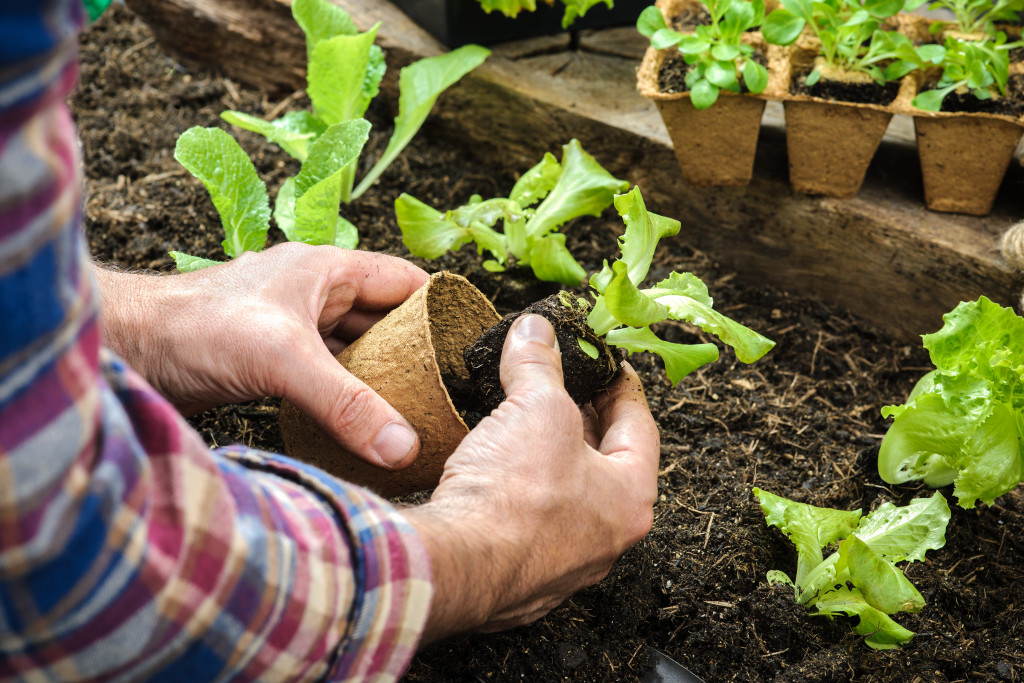Disclaimer: This website provides health information for educational purposes only and is not a substitute for professional medical advice, diagnosis, or treatment. Always seek the guidance of a qualified healthcare provider with any questions you may have.
- Grow your food by planting a garden and raising animals.
- A source has locally grown produce and products to ensure maximum freshness and nutrition.
- Preserve food to increase shelf life and reduce spoilage.
- Invest in renewable energy sources or energy-efficient upgrades for the home.
- Get involved in local recycling programs to reduce waste and emissions.
Living a self-sufficient life is no small task and is becoming increasingly difficult in our current world. To sustain yourself, you must consider many elements of your daily life, such as food and nutrition. People rely heavily on establishments like grocery stores and restaurants for daily sustenance.
Access to these places is essential for the health and well-being of individuals across the globe. A survey by Gallup found that 68% of Americans reported having visited a restaurant or bar in the last 24 hours, while 62% said they saw a grocery store. This demonstrates how vital these establishments are to people’s lives. Without them, obtaining the necessary nutrition for physical and mental well-being would be much more complicated.
However, self-sufficiency does not have to mean returning to a hunter-gatherer lifestyle. It will be an extra effort on top of being able to depend on commercial establishments for food and other essentials. Here are a few tips to consider when striving for a self-sufficient life:
Produce Own Food Sources

A self-sufficient lifestyle is increasingly popular and achievable in today’s world. Producing food and ingredients is a great way to become more autonomous and sustainable. To accomplish this goal, you can take these steps:
Plant a Garden
One of the easiest ways to acquire fresh ingredients is by growing them yourself. Planting a garden can provide abundant fruits, vegetables, and herbs without purchasing them from the store. Gardens come in all shapes and sizes; they can be small, window boxes, or large plots, depending on available space. You can also buy a DIY hoop house for year-round growing, ensuring you will not run out of food-producing plants. Gardening can also provide mental health benefits such as stress relief and increased physical activity levels due to the labor involved with planting and tending crops.
Raise Animals
Raising animals like chickens, goats, or rabbits provides an additional food source for self-sufficient living. Chickens lay eggs that can be eaten straight from their backyard, while goats produce milk that can be used for cheese, yogurt, or other dairy products. Rabbits also make meat considered a leaner alternative to beef or pork but still just as tasty!
Source Locally
Another way to achieve self-sufficiency is by sourcing locally grown products instead of purchasing them from afar at a grocery store chain or restaurant franchise. Locally sourced foods have many advantages compared to those found elsewhere. They often taste fresher since they don’t have preservatives added before being sold and are typically more nutrient dense since they haven’t had time to lose vitamins during long shipping times.
Preserve Food
Preserving food through freezing, pickling, drying, or canning is an excellent method for stocking up on ingredients so that they last longer than when purchased fresh from stores or markets (usually only last 2-3 days). Learning to prepare foods for preservation properly will increase shelf-life while reducing spoilage due to microbial growth avoiding wastefulness during storage periods!
Pursue Renewable Energy

Renewable energy is becoming more accessible and affordable than ever before. Solar panels, wind turbines, and other renewable sources can provide electricity that can power your home for a fraction of the cost of traditional sources like coal or natural gas. Additionally, solar systems require little to no maintenance, meaning you won’t need to pay an electrician every few months to come out and maintain them. This makes renewable energy an excellent option for those looking to increase their self-sufficiency.
Of course, you must first identify where renewable sources are available in your area before fully committing to this lifestyle. Additionally, you should factor in the initial costs of setting up these sources and whether or not it is financially feasible.
If renewable energy is not yet achievable, you can pursue energy-efficient upgrades in your home. Updating old appliances, windows, and roofs can reduce energy consumption and monthly utility bills. Additionally, utilizing natural lighting when possible or investing in LED bulbs are simple ways to reduce electrical costs associated with lighting up the house.
Get Involved in Recycling
Recycling is often seen as a chore but is an essential part of living sustainably. Reusing items like tires and plastic bottles instead of throwing them away can save energy and resources since new materials wouldn’t need to be created for single use. Additionally, recycling can help curb the effects of climate change by reducing emissions from manufacturing processes associated with developing new products.
You can begin recycling easily by investing in a few bins and sorting your waste into various categories, such as paper, glass, plastic, etc. Many cities have municipal recycling programs that make it easy for residents to recycle without sorting their trash.
Final Thoughts
Overall, living a self-sufficient life is an admirable goal. It requires dedication and commitment to make the necessary changes in lifestyle, but it can also be gratifying! Considering all these elements when beginning this journey, you will be well on your way to success. With persistence and determination, living sustainably is achievable even in today’s society.




